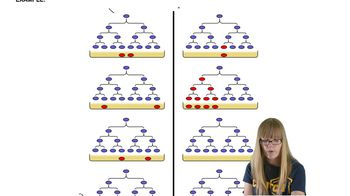Textbook Question
Why is a random mutation more likely to be deleterious than beneficial?
728
views

 Verified step by step guidance
Verified step by step guidance



Why is a random mutation more likely to be deleterious than beneficial?
Most mutations in a diploid organism are recessive. Why?
What is the difference between a silent mutation and a neutral mutation?
Contrast and compare the mutagenic effects of deaminating agents, alkylating agents, and base analogs.
Why are frameshift mutations likely to be more detrimental than point mutations, in which a single pyrimidine or purine has been substituted?
Why are X rays more potent mutagens than UV radiation?